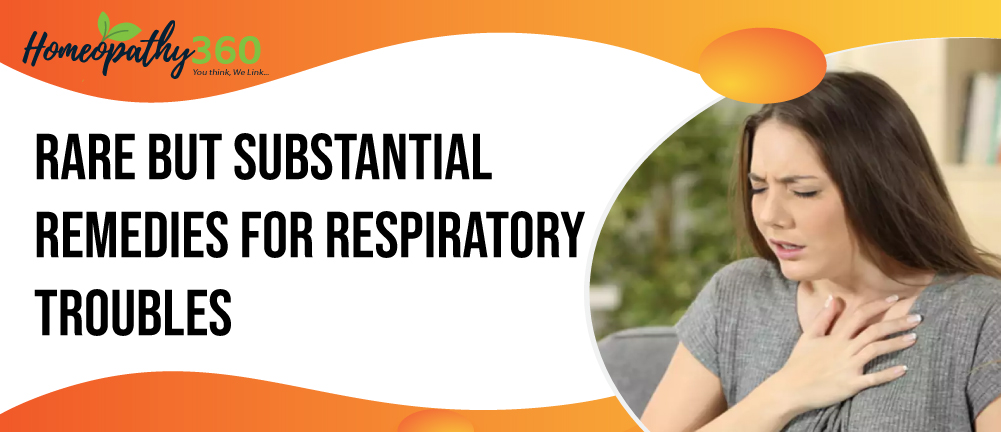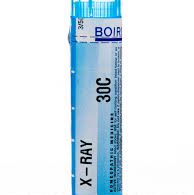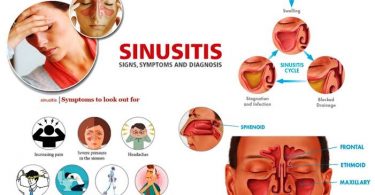
ABSTRACT
Homoeopathic materia medica contained very vast number of drugs. It includes both, polychrest as well as non-polychrest rare drugs. Polychrest drug having wide range of symptoms, so sometime over prescribed, where as rare remedies are overlooked and not even remembered or known to physician. Rare remedies can be very effective in respiratory troubles, when cases having paucity of symptoms, pathological changes, suppression of ailments or acute exacerbation of chronic complaints.
KEY WORDS: Homoeopathy, rare remedies, respiratory ailments, acute exacerbation
ABBREVIATIONS: e.g. – example, OPD – outpatient department
INTRODUCTION
The respiratory system includes not only the lungs but also the chest wall, pulmonary circulation, and central nervous system. There are three key types of respiratory system physiologic disturbances that occur in varying combinations in different lung diseases: ventilatory function, pulmonary circulation, and gas exchange.
The major classes of lung diseases include obstructive lung diseases (e.g., asthma, chronic obstructive pulmonary disease, and bronchiectasis), restrictive lung diseases (e.g., interstitial lung diseases, chest wall abnormalities, and neuromuscular diseases), and vascular abnormalities (e.g., pulmonary thromboembolism, pulmonary arterial hypertension, and pulmonary veno-occlusive disease).
COMMON RESPIRATORY DISEASES BY DIAGNOSTIC CATEGORIES
Obstructive- Asthma, bronchiectasis, chronic obstructive pulmonary disease, cystic fibrosis, bronchiolitis
Restrictive—Parenchymal- sarcoidosis, pneumoconiosis, idiopathic pulmonary fibrosis
desquamative interstitial pneumonitis, drug- or radiation-induced interstitial lung disease, Asbestosis
Restrictive—Extraparenchymal- neuromuscular – diaphragmatic weakness/paralysis myasthenia gravis, guillain-barré syndrome, muscular dystrophies, cervical spine injury, amyotrophic lateral sclerosis
Chest wall/pleural disease-kyphoscoliosis, obesity, ankylosing spondylitis, chronic pleural effusions
Pulmonary vascular disease- Pulmonary embolism, pulmonary arterial hypertension
Malignancy- Bronchogenic carcinoma (small cell or non-small-cell), cancer metastatic to lung
Infectious Diseases- Pneumonia, tracheitis, bronchitis. [1]
HOMOEOPATHIC APPROACH WITH RARE REMEDIES
Homoeopathic materia medica consists of medicine prepared from different sources. The pathogenetic effect of some drugs are well known to us which is known as polychrest drugs, but still full action of some drugs are not known to us and also these drugs are not frequently prescribed which is called as rare remedies. The polychrest medicines have wide range of effect where as rare medicines have very specific action on particular disease.
Some indication of rare remedies:
- When one has insufficient data to prescribe a polychrest
- When some time well proven medicines do not produced desirable results than rare remedies can be proved beneficial
- When cases of acute exacerbation of chronic problem
- When cases have paucity of symptoms
- When cases have fewer symptoms
- When medicine can be use for palliative purpose
- Rare remedies are useful especially at time many patient in OPD and not much time to take detailed history for a constitutional remedy
SOME ADVANTAGE OF PRESCRIBING RARE REMEDICES
We can prescribe rare remedies when case taking is not possible, even when patient unable to describe his suffering, cases where pathological symptoms are prominent, relative ask for treatment when patient is not available and when we need quick action.
SOME DISADVANTAGE OF PRESCRIBING RARE REMEDIES
Some time rare remedies are not available in store, range of potency is not available. It might not be provide permanent cure. [2]
SOME RARE REMEDISE INDICATED FOR RESPIRATORY TROUBLES
ACALYPHA INDICA: Indicted in incipient phthisis, with hard, racking cough, bloody expectoration, arterial haemorrhage but no febrile disturbance. Cough- dry, hard, followed by haemoptysis. Worse in the morning and at night. Constant and sever pain in chest. Blood bright red and profuse in morning, dark and clotted in the afternoon. Pulse soft and compressible. Burning in pharynx, oesophagus, and stomach. Progressive emaciation. Very weak in morning, gain strength during day. Pathological haemorrhage morning aggravation. [3]
ASCLEPIAS TUBEROSA: respiration pain full, especially at the base of the left lung. Dry cough, throat constricted, cause pain in the head and abdomen. Pain in the chest, shooting downward from the left nipple. Chest pain is relived by bending forward. Intercostals spaces near the sternum, tender. Lancinating pain between shoulders. Catarrh, with frontal headache, and sticky yellow discharge. [3]
ASARUM EUROPAEUM: Indicated in nervous affections, loss of energy. Scratching on silk, linen or paper unbearable. Nervous, hacking cough, short respiration. Always feels cold. Cold shivers from any emotion. Feels as if parts were pressed together. Generally tension and contractive sensations. [3]
BADIAGA: cough, worse in the afternoon, better in arm room. Mucus flies out of the mouth and nostrils. Whooping cough, with thick yellow expectoration, Flies out. Hay fever, with asthmatic breathing. Pleuritic stitches in chest, neck all over. [3]
BALSAMUM PERUVIANUM: Indicated in bronchial catarrh, with copious, purulent expectoration. Bronchitis and phthisis, with muco-purulent, thick, creamy expectoration. Loud rales in chest. Very loose cough. Hectic fever and night sweats with an irritating, short cough and scanty expectoration. [3]
COPAIVA OFFICINALIS: Cough with profuse, gray, purulent expectoration. Tickling in the larynx, trachea and bronchi. Bronchial catarrh, with profuse greenish, offensive discharge (bronchitis). [3]
CORALLIUM RUBRUM: Hawking of profuse mucus. Throat very sensitive, especially to air. Profuse nasal catarrh. Inspired air feels cold. Profuse secretion of mucus, dropping through the posterior nares. Dry spasmodic, suffocative cough, very rapid cough, short, barking. Cough with great sensitiveness of air passages, feels cold on deep inspiration. Continuous hysterical cough. Feels suffocated and greatly exhausted after whooping cough. [3]
CASTANEA VESCA: Indicated in whooping cough, especially in early stage, with dry ringing violent, spasmodic cough. Generally desire for warm drinks. Very thirsty. [3]
CARDUUS MARIANUS: Indicated disease of miners. Associated with asthma. Chest- stitching pains in the lower, right ribs and front (pleurisy). Worse, moving, walking, etc. Asthmatic respiration. Pain in chest, going to the shoulder, back, loin and abdomen with an urge to maturate. [3]
CURARE: Indicated in muscular paralysis of respiratory system. Threatened paralysis of respiration on falling asleep. Short breath (emphysema). Short dry cough, provokes vomiting, followed by fainting. Chest sore to pressure. Very distressing dyspnoea. [3]
EUCALYPTUS GLOBULUS: Asthma with great dyspnoea and palpitations. Moist asthma. Expectoration of white, thick mucus. Bronchitis in the aged. Bronchorrhoea. Profuse expectoration of offensive muco-pus. Irritating cough, whooping cough in rachitic children. Foetid form of bronchitis, bronchial dilatation and emphysema. [3]
GUAIACUM: feels suffocated (asthma) . Dry, tight cough. Halitosis after coughing. Pleuritic stitches. Pain in the articulations of the ribs, with shortness of breath till expectoration set in. Generally sensitive and aggravation from local heat. Unclean odour from the whole body. [3]
INULA HELENIUM: Indicated in dry cough, worse at night and lying down, larynx painful. Chronic bronchitis, cough with thick expectoration, languor and weak digestion. Stitches behind the sternum. Teasing cough with marked, free expectoration. Palliative in tubercular laryngitis. [3]
LACTUCA VIROSA: Indicated in hydrothorax and ascites. Sensation of tightness and lightness especially in chest. Difficult breathing (asthma). Suffocative breathing from dropsy of the chest. Constant tickling cough. Incessant, spasmodic cough, as if the chest would fly to pieces (bronchitis). Squeezing in lower chest. [3]
LAUROCERASUS: Indicated cardiac patient who has spasmodic ticking cough. Lack of reaction especially in chest and heart. Generally coldness not ameliorated by warmth. Cyanosis and dyspea, worse sitting up. Patient puts hand on heart. Cough with Valvular disease. Constriction of chest, cough with copious, jelly like or bloody expectoration. Threatening paralysis of the lung. Grasping of breath, clutches the heart. [3]
MYRTUS COMMUNIS: Indicated in incipient phthisis. Chest- stitching pain in the left breast, radiation to the shoulder blade. Dry , hollow cough, with tickling in the chest. Worse in the morning. Sensation of burning in the left chest. [3]
MYOSOTIS SYMPHYTIFOLIA: Indicated in chronic bronchitis and phthisis. Cough with profuse muco- purulent expectoration (bronchitis), gagging and vomiting during cough, worse while or after eating. Bronchorrhoea. Pain in the left lung(lower), painful while coughing and sensitive to percussion. [3]
PIX LIQUIDA: a great medicine for cough, bronchial irritation after influenza. Chest – pain in a spot, around the third left costal cartilage where it joins the rib. Rales through the lungs, and muco-purulent sputum. Offensive odour and taste. Chronic bronchitis. [3]
PHELLANDRIUM AQUATICUM: a very good remedy for the offensive expectoration and cough in phthisis, bronchitis and emphysema. Tuberculosis generally affecting the middle lobes. Everything tastes sweet. Haemoptysis. Chest- sticking pain in the right breast near the sternum, extending to the back, near shoulders. Dyspnoea and continuous cough, early in the morning, cough, with profuse fetid expectoration, compels him to sit up. Hoarseness. [3]
SILPHIUM LACINIATUM: Indicated in various forms of asthma and chronic bronchitis. Cough with expectoration, profuse, stringy, frothy, light colour. Excited by sense of mucus rattling in the chest and worse by drafts of air. Constriction of lungs, catarrh, with copious, stringy, mucus discharges. Desire to hawk and scrap the throat. Irritation of posterior nares, involving the mucus membrane of nasal passages. [3]
SULFONALUM: congestion of lungs, stertorous breathing. Sighing dyspnoea. Generally profound weakness, all gone, faint feeling and despondency. [3]
SUCCINUM: Indicated in nervous and hysterical symptoms, asthma, incipient phthisis, chronic bronchitis, pain in chest, whooping cough. [3]
STROPHANTHUS HISPIDUS: Indicated in dyspnoea, especially on ascending. Lungs congested. Oedema of lungs. Bronchial and cardiac asthma. [3]
STILLINGIA SYLVATICA: indicated in dry spasmodic cough. Larynx constricted with stinging in fauces. Trachea feels sore when pressed. Hoarseness and chronic laryngeal affection in public speakers. [3]
SQUILLA MARITIMA: Indicated in bronchopneumonia. Short dry cough, must take a deep breath. Dyspnoea, stitches in the chest and painful contraction of abdominal muscles. Violent, furious, exhausting cough with profuse mucus, salty, slimy expectoration, and involuntary spurting of urine and sneezing. Cough provoke by taking deep breath AND COLD DRINKS, from exertion and change from warm to cold air. Sneezing with coughing.[4]
TEREBINTHINIAE OLEUM: indicated when having affinity for bleeding mucus membranes. Difficulty in breathing, lungs feel distended, haemoptysis. Chest- burning and tightness across the chest. Bronchitis of children with retention of urine. Bronchial asthma with profuse expectoration. [4]
TRILLIUM PENDULUM: Indicated in phthisis with purulent and copious expectoration and spitting of blood. Aching at the end of sternum. Suffocative attacks of irregular breathing with sneezing. Shooting pains through the chest. [4]
VERBASCUM THAPSUS: Indicated when inferior maxillary branch of fifth pair of cranial nerves affected and produced ear, respiratory symptoms. Cough worse at night. Asthma. Soreness in pharynx, cough during sleep. Catarrh with hoarseness and stuffed chest. Frequent attacks of deep, hollow cough with sound like a trumpet, better deep breathing. Dry, hoarse cough worse at night. Cough, nervous without waking. [4]
ZINGIBER OFFICINALE: Debilitated state of the digestive, sexual and respiratory disease. Hoarseness. Smarting below the larynx, breathing difficult. Painful respiration. Asthma, without anxiety, worse towards the morning. Asthma humid. Scratching sensation in the throat, stitches in the chest. Cough dry, hacking, copious, morning sputa. [4]
CONCLUSION
Every coin has two sides, so even though there is no permanent cure, we can use rare remedies for respiratory troubles. With the help of indicated rare remedies for respiratory troubles like acute and chronic bronchitis, asthma, pneumonia, fibrosis and many more are rapidly give relief to patient. Rare remedies are beneficial in respiratory troubles, where fewer symptoms, paucity of symptoms and polychrest failed to produce desirable effect. Rare remedies also help to control acute exacerbation of chronic disease. Using rare remedies along with polychrest remedies enhance the scope of homoeopathic field over the disease. Indicated rare remedies not only give relief to patient in acute phase of respiratory troubles, but also reduce the suffering of patient and give strength to fight with chronic disease.
REFERENCES
1. Kasper,Fauci, Hauser, Longo, Jameson, & Loscalzo. Harrison’s Manual of Medicine, 19th edition, published by McGraw- Hill education,2015.
2. Gupta A.K. Use of rare remedies in homoeopathic practice. Available at https://www.homoeopathicjournal.com/articles/95/3-3-5-423.pdf
3.Boericke W. Boericke’s. New manual of Homoeopathic Materia Medica with repertory; third edition; published by B. Jain Publishers (P) Ltd.
4. Murphy R. Lotus Materia Medica; 2nd revised edition Indian edition published by B. Jain Publishers (P) Ltd. 2002.
ABOUT THE AUTHOR:
| DR SRABANI PAL Associate Prof. & HOD OF ANATOMY DEPARTMENT JAWAHARLAL NEHRU HOMOEOPATHIC MEDICAL COLLEGE, PARUL UNIVERSITY |
| DR FALGUNI PATEL PROF. & HOD OF FORENSIC MEDICINE & TOXICOLOGY JAWAHARLAL NEHRU HOMOEOPATHIC MEDICAL COLLEGE, PARUL UNIVERSITY |





